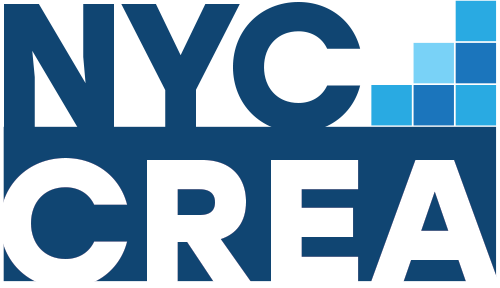Articles
Manhattan's retail sector is experiencing a cultural renaissance in 2025, driven by a new wave of tenants rooted in fine arts and immersive entertainment. As New York retailers and landlords seek to deepen consumer engagement and drive foot traffic, artistic and interactive experiences are redefining the role of retail spaces—not just as storefronts, but as destinations.
The Trump administration’s aggressive push to reduce government spending through real estate cuts is sending ripples across the commercial real estate (CRE) landscape. Spearheaded by the Department of Government Efficiency (DOGE), the initiative includes canceling or restructuring 98 federal leases covering over 2 million square feet and proposing the sale of hundreds of federally owned buildings. Cities like New York are beginning to feel the impact, particularly as iconic federal properties are flagged for potential divestiture.
As of 2025, President Trump has reimposed aggressive tariffs—up to 25% on imports from Canada and Mexico, and 10% on goods from China. While designed to support domestic industries, these policies could profoundly alter the commercial real estate (CRE) landscape, particularly in major urban centers like New York City. There are 6 major positive impacts and challenging repercussions that these policies bring to the CRE market.
Another successful real estate partnership! Thank you, Ellen, for trusting NYCCREA to help sell a great property in Queens!
New York City’s life sciences sector is fast becoming a transformative force in the city’s commercial real estate landscape. Traditionally dominated by financial services and tech tenants, the city’s office market is now seeing a surge in demand for specialized lab space — the cornerstone of biotech and biomedical research operations.
Marking a cautious pace for 2025, the Northeast U.S. Industrial & Logistics (I&L) sector closed out 2024 on a mixed note, showing resilience in rent growth despite clear signs of a market slowdown. In the fourth quarter, leasing activity dropped significantly, marking the sharpest quarterly decline in recent memory. Yet, amid the regional softness, the New York metro and its neighboring New Jersey markets maintained a level of stability thanks to continued demand from third-party logistics (3PL) and key retail tenants.
Manhattan’s office market is experiencing a strong resurgence in early 2025, with leasing activity off to its best start since 2014. Downtown recorded its best leasing performance in 5 years while Midtown South marked its best net absorption in 10 years. Top lease transactions include renewals and expansions of a trading firm, clothing brand, and healthcare provider.
Landlord-backed groups claim that rent stabilization laws, particularly the Housing Stability and Tenant Protection Act (HSTPA) of 2019, have caused widespread vacancies by making it economically unfeasible to renovate and re-rent units. A report by the NYC Comptroller Office debunks this claim, showing that fewer than 1% of rent-stabilized apartments are unavailable for rent. Instead, targeted solutions can address the small number of units that remain vacant while preserving tenant protections.
The City of Yes for Housing Opportunity is the most ambitious update to the zoning code since 1961, according to the New York City Department of Planning. This landmark initiative aims to tackle the city’s housing shortage by making it easier to build more housing in every neighborhood.
New experiential concepts from global names like Tiger Woods, Justin Timberlake, and Aqua Restaurant Group are driving fresh demand in Manhattan's eclectic dining scene. The Food and Beverages (F&B) sector accounted for 33% of Manhattan’s retail deals annually since 2010, and the influx of new-to-market operators underscores how Manhattan remains a global destination for culinary innovation and expansion in commercial real estate.
As New York City's congestion pricing program progresses through 2025, its initial outcomes offer valuable insights into urban traffic management. The observed reductions in traffic volume and improvements in travel times underscore the potential of congestion pricing to enhance urban mobility and environmental quality. However, the challenges related to equity, traffic diversion, and economic impacts highlight the need for ongoing assessment and responsive policy adjustments.
The transformation of office buildings into residential units offers a multifaceted solution to New York City's housing crisis. Financially, conversions are appealing as they cost about one-third less than building from scratch, making them a cost-effective strategy for increasing housing stock. Check notable examples of office-to-residential conversions in New York City here.
The Complete Guide to NYC Commercial Real Estate Investment: 2025 Edition Get your investment check list and take note on what this year might bring to the Big Apple's retail, industrial, office, mixed-use, and multifamily sectors. The outlook for 2025 across New York City's commercial real estate sectors presents a mixed but largely optimistic picture.
Manhattan's commercial real estate market is headed for a major fortune. 2024 witnessed a surge in leasing activity, reaching pre-pandemic levels and hitting milestones in the industrial, retail, multifamily, and hotel sectors. Major industries such as banking, finance, insurance, and real estate continue to prevail in leasing transactions, while other businesses like media and entertainment surge significantly, signaling a robust 2025.
The $215 million redevelopment of the Kingsbridge Armory in Bronx, New York is projected to generate $2.6 billion in economic impact over the next 30 years. Phase One includes event spaces, sports fields, cultural and commercial hubs, and community-focused facilities, while Phase Two will deliver 450 units of affordable housing.

